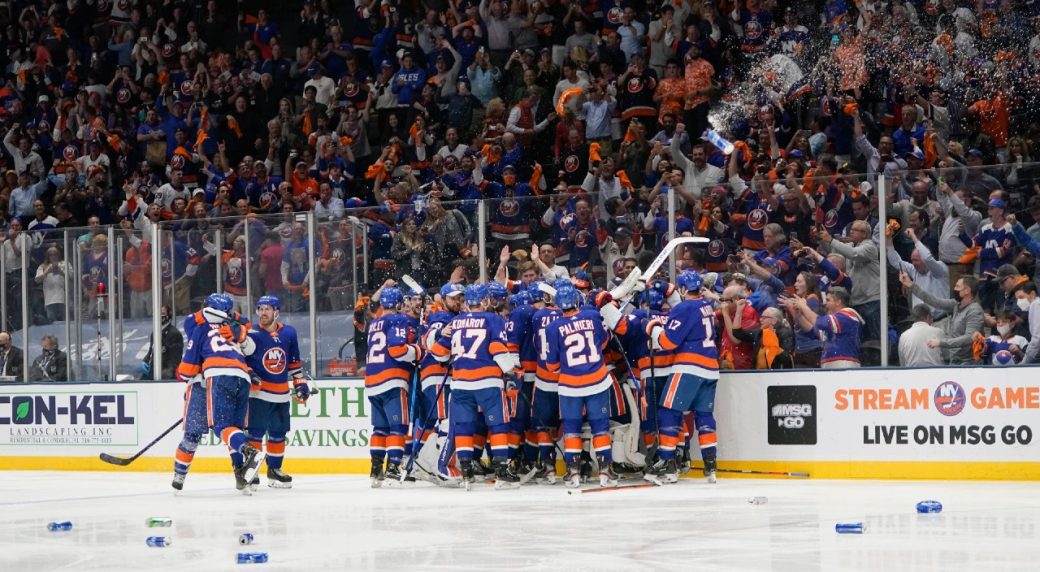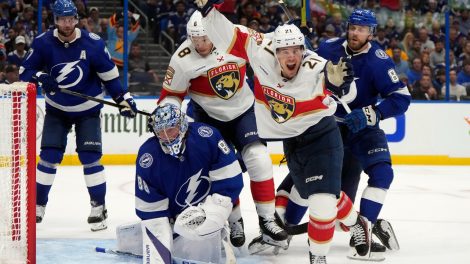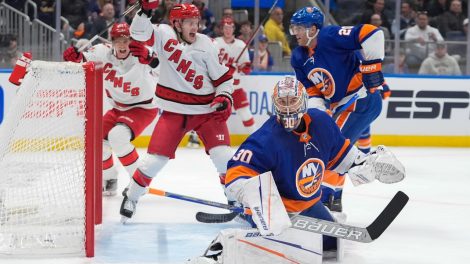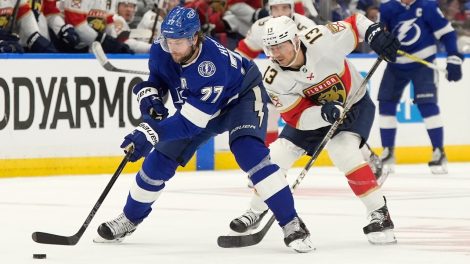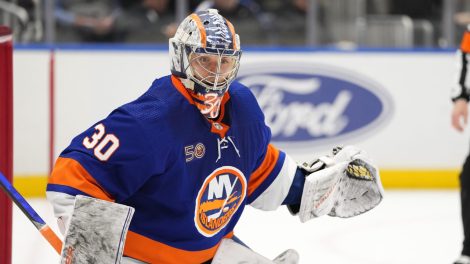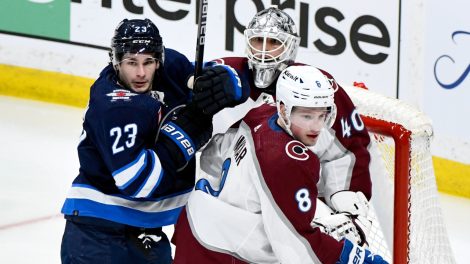One of the more grating things from the business side of society over the past 10 or 15 years has been every business branding itself as “Uber, but for…” “Our company is Uber, but for cereal.”
Sports has its own version of that Uber framing in the aftermath of the Netflix F1 series Drive to Survive, which I’ve now referenced in consecutive columns because it deserves it. “They need to do a Drive to Survive series, but for…” is the new phrase that pays, only this one feels justified.
It’s been a revelation, largely because of its two unique angles: they’ve focused on the drama and competition that exists within teams (a capital sin to acknowledge in hockey), and they’ve shone a spotlight on all tiers of the competition including the bottom one, highlighting how there’s still individual drama that rages within those groups. It sounds like the latter was a happy accident, as they weren’t granted access to top teams in the initial season, but they covered those lesser teams so thoroughly you became invested in their stories.
Because of that show, F1’s popularity has boomed in North America. Diehard racing fans will tell you they don’t enjoy the show, that it didn’t get all that deep on anything. Some may even resent the show for dragging all us noobs along. But guess what: it wasn’t for them to begin with. It converted new fans for the sport, which means new pockets to drain, which is an unbelievable win for any league.
As a result of the A to B dynamic “make docuseries, get fans,” leagues are lining up to try the same (the NFL and Hard Knocks is another successful template). I include the NHL in that, and they should embark on creating it immediately.
[snippet id=3816507]
Let’s start with the few advantages F1 has that the NHL does not: For one, all F1 teams are together every single week at a shared venue. Logistically, that takes care of a massive hurdle that the four major North American sports must find a way to clear. Incidentally, this is why the PGA Tour – which has announced its own F1-inspired show next season – has a real chance at having success.
There’s also the simplicity factor with F1. Their league consists of just 20 drivers (and some others on the fringes in F2), made up of 10 teams with two “seats” per. A single NHL team contains that many personalities alone, and so the breadth of teams and stories can feel daunting. Where to start?
What an NHL version of this show could steal, though, are the unique Drive to Survive features we already mentioned: a focus on the “non-traditional” markets to start (more Racing Point and less Mercedes at first) who would be more prone to giving access for dollars and exposure. I know I watched a docuseries on the soccer team from Sunderland (called Sunderland Til I Die, which I also recommend) and immediately started looking for a shirt to buy. You can’t tell me generating that reaction from utter outsiders wouldn’t appeal to just about every team in hockey.
Another perk of focusing on internal drama is that it largely exists away from the biggest names. In both cases — using non-traditional market teams with a focus on the middle of the roster and fringe players — your odds of getting a team to agree to being the subject matter are higher than, say, trying to do a docuseries on the Boston Bruins that focuses on Brad Marchand and Patrice Bergeron and David Pastrnak. (That may not be all that interesting anyway. They’re good, they get ice time and dollars and try to win the Cup. We know that.)
Yes, the Toronto Maple Leafs are the subject of an upcoming docuseries — an “All or Nothing” show put together by Amazon, but having seen All or Nothing’s in the past (I watched the one on Man City), it’s safe to say the camera will be aimed away from internal strife. If I had to guess, there’s little chance you’ll finish watching that upcoming documentary and feel like there were massive internal failings despite their results. (I’m guessing the team itself was guaranteed final approval before it goes to air.)
Leaving the F1 series, I found myself wondering how Haas could possibly continue to employ Guenther Steiner or how Roman Grosjean continued to hold one the 20 available seats. That’s not great for those individual guys maybe, but as a trade-off for converting me to a fan of the sport I’m guessing F1 as a whole is OK with that. I think most NHL players and staff see themselves as competent, and wouldn’t think they’d come off that way in a potential show, so that wouldn’t be a turn-off to getting initial agreement.
If you started the show with non-traditional market teams that are competitive — Columbus, Florida, Carolina, maybe Dallas or Nashville come to mind — I think you’d get illuminating commentary from players and coaches given they aren’t normally inundated with media. In the NHL the highs and lows come and go quickly based on the frequency of play, but because of that we can miss how a team felt during those swings. We see that in the big picture they’re fine, but miss the process they took to correct course.
When a team loses twice in a row and then wins, we as fans only see a slightly imperfect week. But internally after those two losses you never know when the losing will end, and you start to worry it’s all about to go horribly wrong. It gets tense.
What’s fascinating to me, having been on both sides of the player/media perspective, is how a media member will correctly state that a player will break out of a scoring slump eventually, and the stat guys will state that a poor shooting percentage is unsustainable, but for the players and teams involved it’s not always as simple as “stick with it and it will eventually come.” You need it to come next game, not “eventually,” and not scoring/winning is often a symptom of a bigger problem. You can’t always just shrug and say “Ah bad luck we’ll get the bounces another day.”
[snippet id=4167285]
Maybe a player isn’t getting to the net in the same way and they need to watch video to see how their attacking style has been different of late. Maybe they’re playing with a linemate who doesn’t pass as much or as well. Maybe they’re struggling with an injury. Or maybe they’re squeezing the stick because they know their opportunity is about to go to someone else on the team. Being a part of that process, which cameras could illuminate, is a fun part of understanding the direction and ambitions of a pro hockey team.
I’m interested in the players fighting for jobs across the waiver wire within the NHL too, and just how tough those opportunities are to come by. Every organization’s roster construction creates certain needs, and the guys who are fringe AHL/NHL are working to tack a literal zero on to their paycheck. Guys will become whatever the team wants them to for the chance to make $750,000 instead of $75,000. Maybe a team needs speed or toughness or a PK guy or a faceoff man. It’s crazy watching players who aren’t necessarily specialists in those things contort themselves to try to fit the needs of what their organization is after, and highlighting what’s happening with their style of play would be illuminating.
There are plenty of times after a win when individual players are left dejected in the dressing room. The team sees those things, the coaches in particular, but those moments are usually hand-waved away and ignored. Maybe a certain guy got benched and whoever stepped into their spot had success. Maybe the guy they’re competing with for PP time got a chance on the top unit and scored. Maybe they blew an opportunity or just played poorly and they know that the next day at practice the colour of the jersey in their stall is going to be “fifth line” or “fourth pair.”
It’s often at practice the following day where players see how their play will impact them going forward. We never have cameras there.
The NHL’s best bet would be to have a presence in a handful of cities at once, maybe five or so, and to focus on those middle/fringy athletes. They’d be best doing interviews with the equipment managers, who know the players and internal stories better than any other staff member in the building, head coach included. They’d be wise to interview the beat writers, who are most adept at pointing to the internal jockeying for opportunities that the players rarely acknowledge exist.
One of the strengths of the F1 series is that the drivers are on their own in those cars, and they don’t depend on their teammates to have success. That means in their interviews they can let their egos shine through. They can say they believe they’re the best, and their team can say “Good, we want him to think that way because the better he does and more confident he drives, the better for all of us.” Ego is encouraged. In hockey, putting yourself out there like that can get a guy alienated in the room. And so, I think you also need a translator, so to speak. You need to interview the players involved in the drama, and have someone else shining a light on what they’ve carefully said (or didn’t say) could really mean.
With these shows not coming out until after the season is finished, I think you’re at very little risk of putting a player in a bad spot, and even still, it’s not the end of the world if a player says something interesting (perhaps self-first rather than team-first?) and not everyone on his team thinks it’s perfect.
We need to get there in hockey: acknowledging that so much of why players say “it’s all about the team” is about continuing to be employed by said team, or at least, finding employment with another team down the road. It’s not that hockey players are better guys than the next athletes with all this “team” stuff, it’s that they know part of earning “seats” in the league involves being a team-first guy. That’s where the disconnect is: players and staff all say team, team, team, but are at least partly aware that doing so is in the best interest of self. We don’t seek out those individual motivations well in hockey media.
The NHL has a culture that leads to the burying of some of the best internal storylines because it’s a sin to admit you care about your own career, for some reason. I think with enough access, enough interviews, and perhaps that translator, we can get to some great stories.
At the end of the day professional sports are about entertainment — it’s the world’s best form of reality TV — and embracing another angle of that can only be good for fan engagement, and in turn, the health of the league as a whole.
[relatedlinks]

